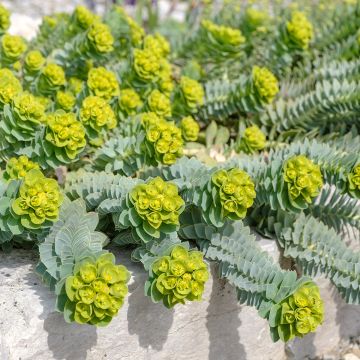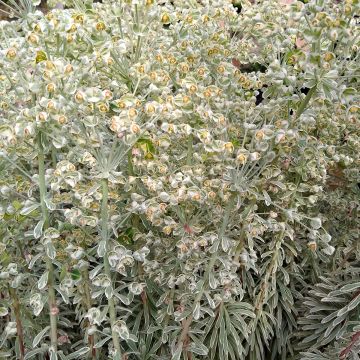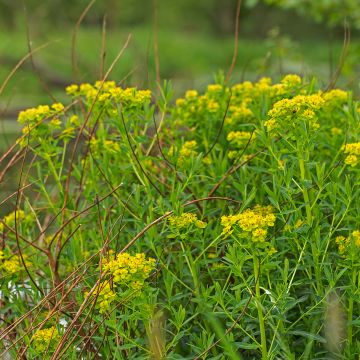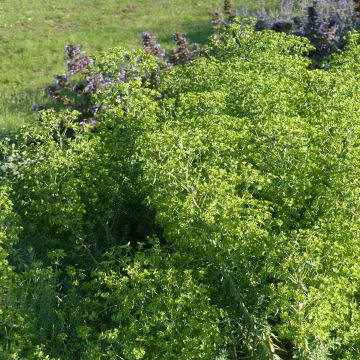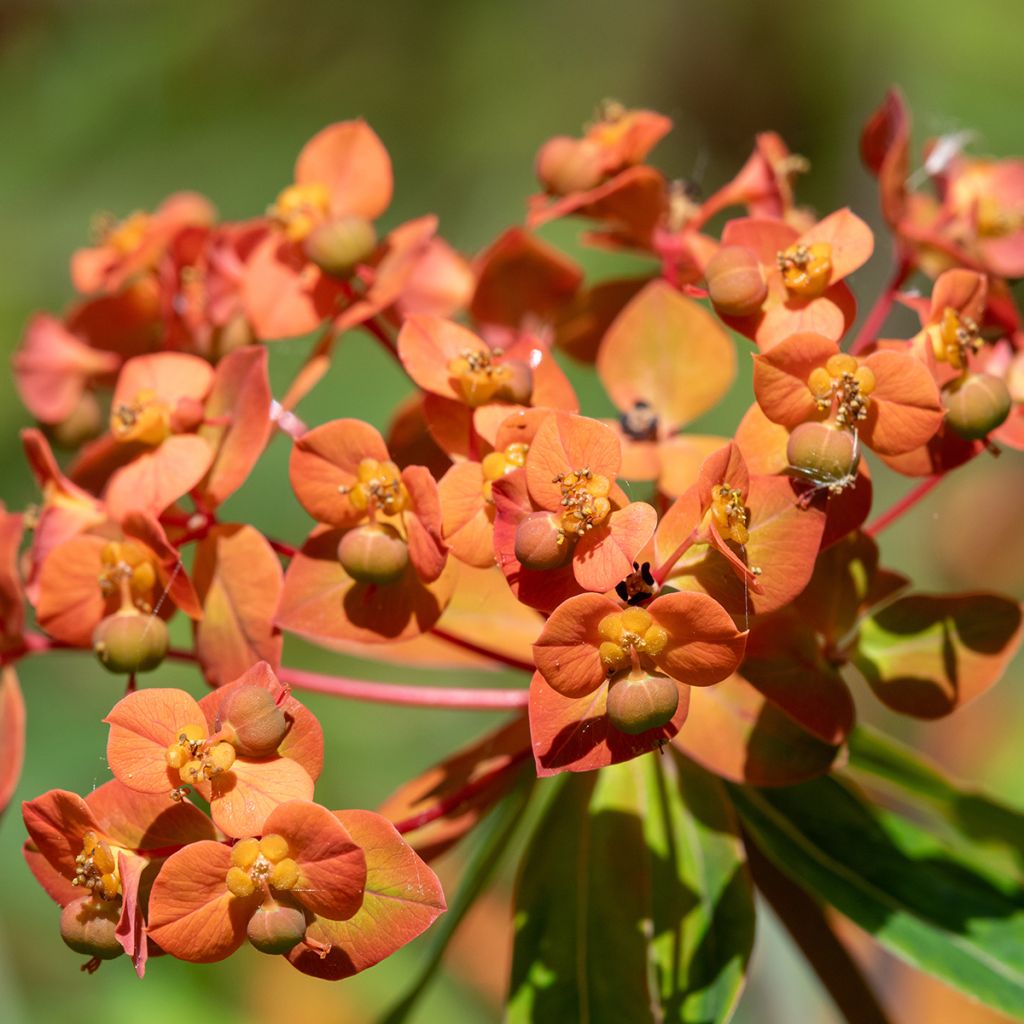

Euphorbia griffithii - Spurge


Euphorbia griffithii - Spurge


Euphorbia griffithii - Spurge


Euphorbia griffithii - Spurge
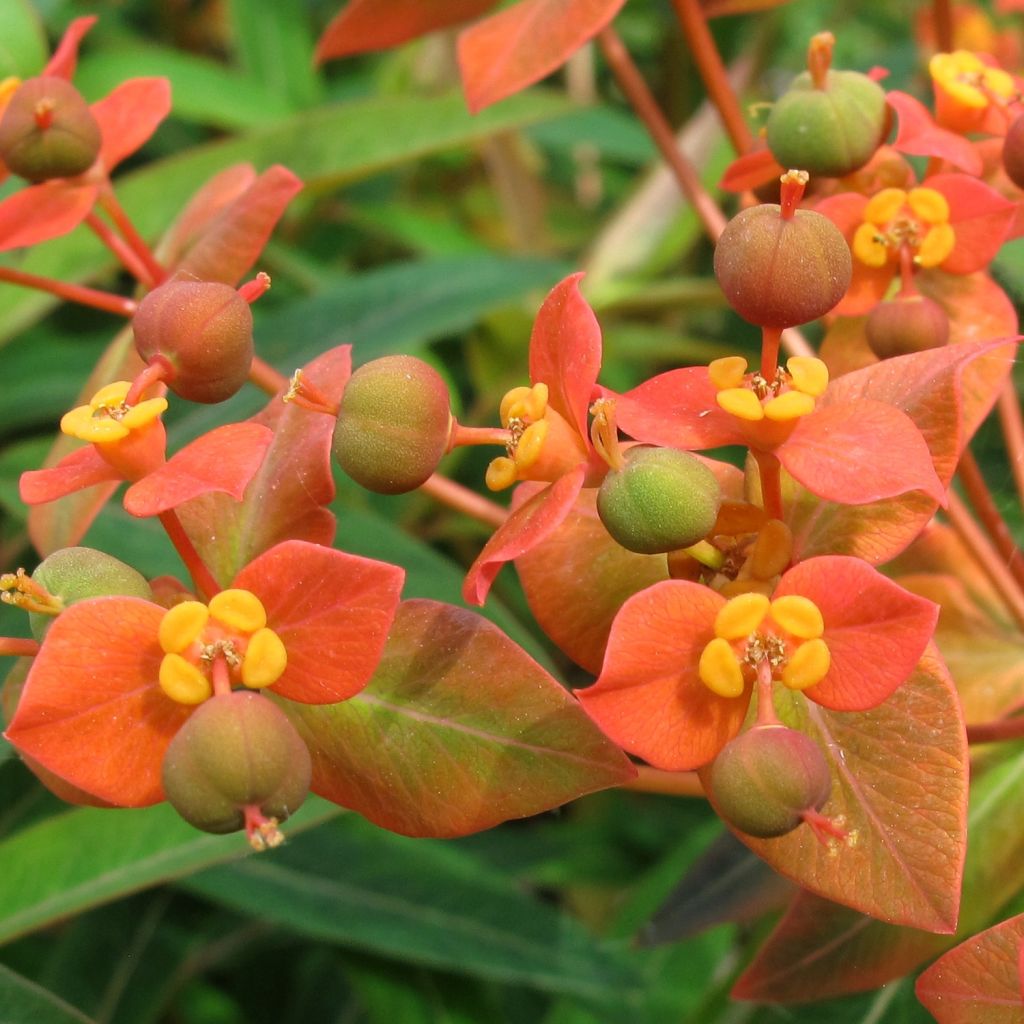

Euphorbia griffithii - Spurge


Euphorbia griffithii - Spurge


Euphorbia griffithii - Spurge


Euphorbia griffithii - Spurge
Euphorbia griffithii - Spurge
Euphorbia griffithii
Griffith's Spurge
In my last order, I bought a young plant Euphorbia griffithii. When it arrived, it was naked and very small. I took great care of it, but unfortunately, it dried up. I have already ordered several plants from you and have always been satisfied, but this last one was a bit disappointing.
martine, 29/07/2017
This plant carries a 12 months recovery warranty
More information
We guarantee the quality of our plants for a full growing cycle, and will replace at our expense any plant that fails to recover under normal climatic and planting conditions.
From €5.90 for pickup delivery and €6.90 for home delivery
Express home delivery from €8.90.
Delivery to Corse prohibited: UE law prohibits the import of this plant from mainland France to Corse as part of the fight against Xylella fastidiosa. Please accept our sincere apologies.
More information
Does this plant fit my garden?
Set up your Plantfit profile →
Description
The Euphorbia griffithii, also known as Griffith's spurge, is a superb deciduous plant, hardy and very distinctive. This large euphorbia, which thrives in moist and humus-rich soil, has highly colorful foliage, olive green veined with red, topped in summer by beautiful inflorescences of a vibrant vermilion red. An absolutely remarkable perennial, it will thrive in any good fresh garden soil, or even in large pots on the terrace or balcony.
The Euphorbia griffithii belongs to the eclectic family Euphorbiaceae. Its rhizomatous herbaceous perennial is native to the Eastern Himalayas. This rhizomatous euphorbia quickly spreads with the help of its underground rhizomes, without becoming invasive. The plant forms an erect clump, with reddish-green stems that later turn green, reaching approximately 90 cm (35in) in height, and spreading up to 60 cm (24in) on the ground. In spring, its young foliage is purple, then turns olive green tinged with red, while in June, large cymose inflorescences composed of involucres in a bright orange retouched with red at maturity emerge, resembling flaming wigs. In autumn, this magical plant transforms into a torch, creating a symphony of yellow, orange, red, and purple. The combination is very colorful! The foliage is deciduous to semi-evergreen depending on the climate. Like all euphorbias, this plant produces a sticky latex. This substance can cause skin irritation and is toxic if ingested (all parts of the plant).
Unlike Mediterranean species, this Griffith's spurge does not tolerate excessively dry soils. Note also that the colour of the inflorescences varies significantly depending on the exposure and nature of the soil. It is perfectly suited for exotic gardens, or for rock gardens. Its uniqueness pairs well with kniphofias, the large leaves of tetrapanax, Hedychium assam orange, or yuccas. It has a majestic silhouette that can be placed at the turn of a path. Equally at home in modern gardens as in a rural setting, it complements any colour, enhancing the fiery shade of its inflorescences and foliage. To make its flowering even brighter, simply pair it with the purple of irises, Alliums, or large-flowered clematis. The combination with grasses is particularly successful. It can be used to create soft and sinuous mass effects, structure flower beds, contrast colours and leaf shapes.
For the record, we have given up on the 'Fire Glow' and 'Dixter' cultivars as we have not yet seen the difference between these named varieties, respectively found by A. Bloom and C. Lloyd. Both are described as improvements on the species of rare beauty, but the nurseries that sell the authentic varieties are themselves very rare because, to this day, we have still not found them. For a fair comparison, similar growing conditions are required. However, different cultivars under the same conditions have all turned out to be identical.
Report an error about the product description
Euphorbia griffithii - Spurge in pictures
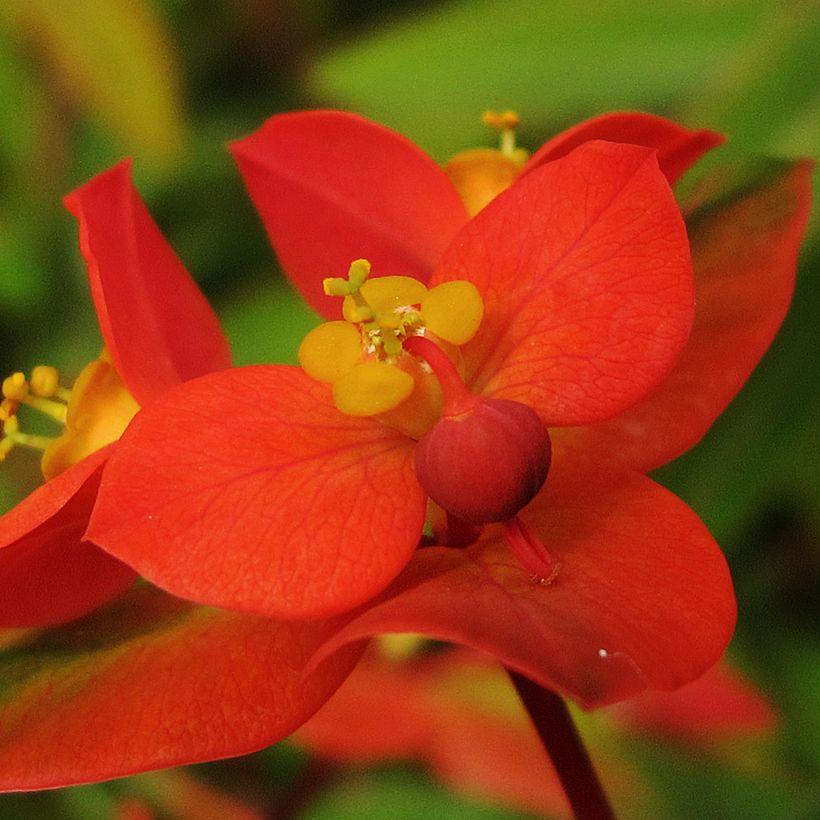





Flowering
Foliage
Plant habit
Safety measures
Botanical data
Euphorbia
griffithii
Euphorbiaceae
Griffith's Spurge
Himalayas
atteintescutaneomuqueuses
Cette plante peut provoquer l'apparition de réactions cutanées indésirables, une atteinte des yeux, ou des difficultés respiratoires si elle est ingérée.
Ne la plantez pas là où de jeunes enfants peuvent évoluer. Evitez tout contact avec la peau: privilégiez l'emploi de gants pour la manipuler. En cas de contact, lavez-vous soigneusement les mains et rincez abondamment à l'eau la zone concernée. Lavez les vêtements entrés en contact. En cas de réaction cutanée, contactez votre médecin ou le centre antipoison le plus proche de chez vous. En cas d'atteinte étendue ou de difficultés respiratoires, appelez immédiatement le 15 ou le 112.Pensez à conserver l'étiquette de la plante, à la photographier ou à noter son nom, afin de faciliter le travail des professionnels de santé.
Davantage d'informations sur https://plantes-risque.info
Other Euphorbia - Spurge
Planting and care
The young plant of Euphorbia griffithii can be easily cultivated in a well-drained but consistently moist and highly humus-rich soil, preferably in full sun. This plant does not tolerate limestone. The ideal substrate should be light, sandy, porous, but always slightly moist. Plant in early autumn or spring. This Euphorbia does not tolerate drought.
Planting period
Intended location
Care
-
, onOrder confirmed
Reply from on Promesse de fleurs
Haven't found what you were looking for?
Hardiness is the lowest winter temperature a plant can endure without suffering serious damage or even dying. However, hardiness is affected by location (a sheltered area, such as a patio), protection (winter cover) and soil type (hardiness is improved by well-drained soil).

Photo Sharing Terms & Conditions
In order to encourage gardeners to interact and share their experiences, Promesse de fleurs offers various media enabling content to be uploaded onto its Site - in particular via the ‘Photo sharing’ module.
The User agrees to refrain from:
- Posting any content that is illegal, prejudicial, insulting, racist, inciteful to hatred, revisionist, contrary to public decency, that infringes on privacy or on the privacy rights of third parties, in particular the publicity rights of persons and goods, intellectual property rights, or the right to privacy.
- Submitting content on behalf of a third party;
- Impersonate the identity of a third party and/or publish any personal information about a third party;
In general, the User undertakes to refrain from any unethical behaviour.
All Content (in particular text, comments, files, images, photos, videos, creative works, etc.), which may be subject to property or intellectual property rights, image or other private rights, shall remain the property of the User, subject to the limited rights granted by the terms of the licence granted by Promesse de fleurs as stated below. Users are at liberty to publish or not to publish such Content on the Site, notably via the ‘Photo Sharing’ facility, and accept that this Content shall be made public and freely accessible, notably on the Internet.
Users further acknowledge, undertake to have ,and guarantee that they hold all necessary rights and permissions to publish such material on the Site, in particular with regard to the legislation in force pertaining to any privacy, property, intellectual property, image, or contractual rights, or rights of any other nature. By publishing such Content on the Site, Users acknowledge accepting full liability as publishers of the Content within the meaning of the law, and grant Promesse de fleurs, free of charge, an inclusive, worldwide licence for the said Content for the entire duration of its publication, including all reproduction, representation, up/downloading, displaying, performing, transmission, and storage rights.
Users also grant permission for their name to be linked to the Content and accept that this link may not always be made available.
By engaging in posting material, Users consent to their Content becoming automatically accessible on the Internet, in particular on other sites and/or blogs and/or web pages of the Promesse de fleurs site, including in particular social pages and the Promesse de fleurs catalogue.
Users may secure the removal of entrusted content free of charge by issuing a simple request via our contact form.
The flowering period indicated on our website applies to countries and regions located in USDA zone 8 (France, the United Kingdom, Ireland, the Netherlands, etc.)
It will vary according to where you live:
- In zones 9 to 10 (Italy, Spain, Greece, etc.), flowering will occur about 2 to 4 weeks earlier.
- In zones 6 to 7 (Germany, Poland, Slovenia, and lower mountainous regions), flowering will be delayed by 2 to 3 weeks.
- In zone 5 (Central Europe, Scandinavia), blooming will be delayed by 3 to 5 weeks.
In temperate climates, pruning of spring-flowering shrubs (forsythia, spireas, etc.) should be done just after flowering.
Pruning of summer-flowering shrubs (Indian Lilac, Perovskia, etc.) can be done in winter or spring.
In cold regions as well as with frost-sensitive plants, avoid pruning too early when severe frosts may still occur.
The planting period indicated on our website applies to countries and regions located in USDA zone 8 (France, United Kingdom, Ireland, Netherlands).
It will vary according to where you live:
- In Mediterranean zones (Marseille, Madrid, Milan, etc.), autumn and winter are the best planting periods.
- In continental zones (Strasbourg, Munich, Vienna, etc.), delay planting by 2 to 3 weeks in spring and bring it forward by 2 to 4 weeks in autumn.
- In mountainous regions (the Alps, Pyrenees, Carpathians, etc.), it is best to plant in late spring (May-June) or late summer (August-September).
The harvesting period indicated on our website applies to countries and regions in USDA zone 8 (France, England, Ireland, the Netherlands).
In colder areas (Scandinavia, Poland, Austria...) fruit and vegetable harvests are likely to be delayed by 3-4 weeks.
In warmer areas (Italy, Spain, Greece, etc.), harvesting will probably take place earlier, depending on weather conditions.
The sowing periods indicated on our website apply to countries and regions within USDA Zone 8 (France, UK, Ireland, Netherlands).
In colder areas (Scandinavia, Poland, Austria...), delay any outdoor sowing by 3-4 weeks, or sow under glass.
In warmer climes (Italy, Spain, Greece, etc.), bring outdoor sowing forward by a few weeks.

































